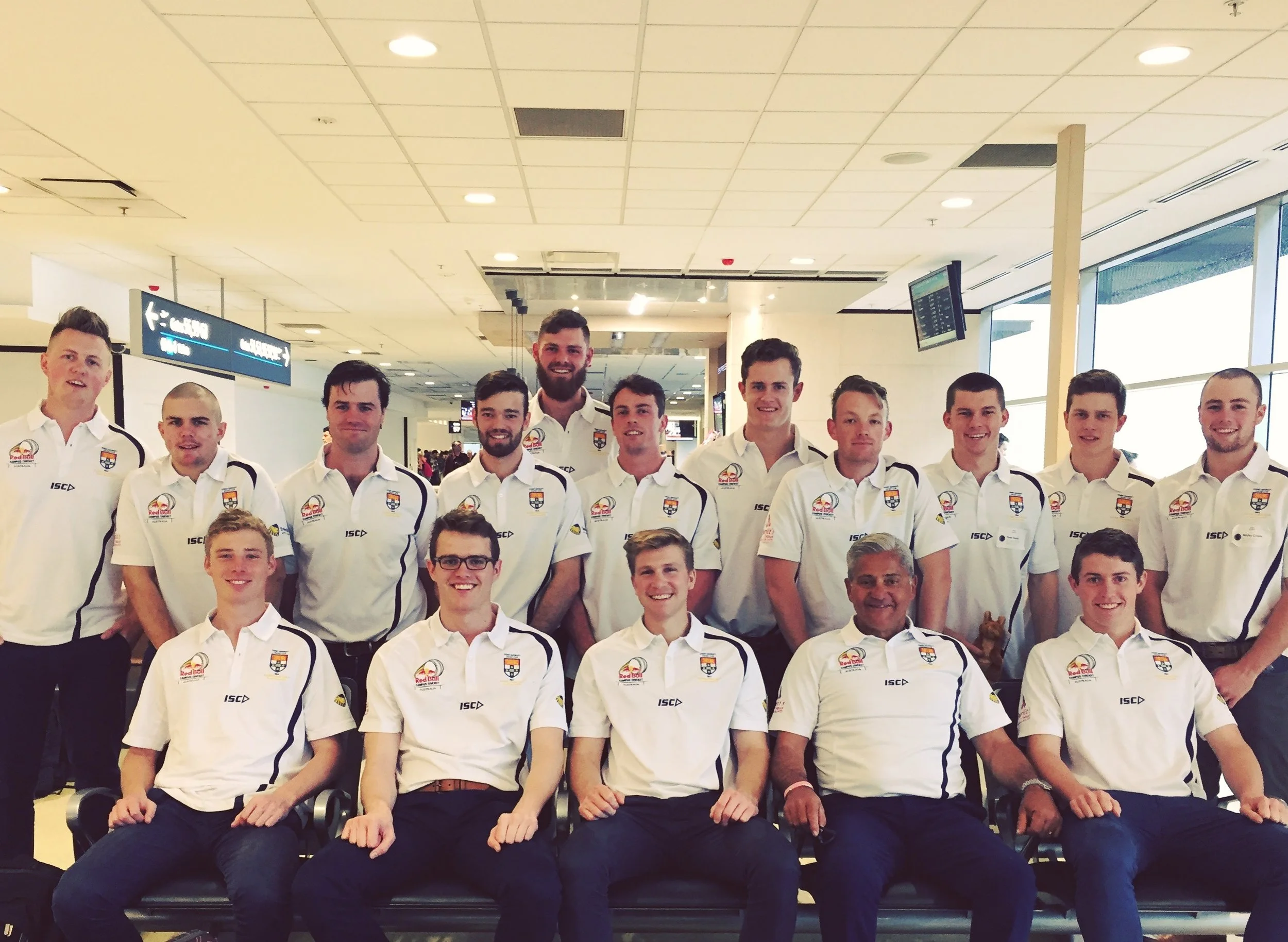Red Bull’s Campus Cricket World Finals gets under way at 11:30amAEST Monday the 5th of September. Arriving Friday evening Sydney University, Team Australia have acclimatised well and hit the training paddock early Sunday morning in preparation for their debut World Finals.
Team Australia was drawn in Pool A alongside reigning champions, South Africa, last years semi finalists, England and round one opponents Bangladesh. Game one takes place at the headquarters of Sri Lankan cricket, Sinhalese Sports Club at 13:30AEST. Day two sees the Australian side play South Africa at the Nondescripts Cricket Ground at 18:30AEST, before rounding out the pool stages on Wednesday the 7th with a rivalry game against England at 13:00AEST.
Team Australia assemble at the airport
Skipper Ben Trevor-Jones has named a strong side for the opening game against Bangladesh. Trevor-Jones stated that “there were a number of tough decisions to make, and its unfortunate for those who miss out on game one but I’m sure the whole squad will be required to make some sort of impact as the week goes on.”
Highlighting the versatility of the squad, Trevor-Jones has named three all-rounders in his side with swashbuckling left-hander, Dugald Holloway joining Charles Litchfield at the top of the batting order. Skipper Trevor-Jones will bat at three followed by Nicky Craze and Joe Kershaw.
Hayden Kerr and Jack Remond are the two all-rounders in the middle order both looking to continue their impressive performances at the Australian University Games Grand Final that guaranteed World Finals qualification. Jack Gibson joins them in the lower order, brimming with confidence after a dominant century in Brisbane last weekend against University of Queensland. New Sydney University Cricket Club recruit Kieran Elley, will be joined by Xavier Frawley taking the new ball, with Jack Holloway rounding out the XI. Tom Galvin has been named as 12th Man.
Director of Cricket, Gary Whitaker echoed Trevor-Jones’ sentiments clarifying that “it is a simple game, and we’ve picked the best XI for the conditions we’re going to face, and now the onus is on the boys to ensure they can execute their plans.”
All games and up-to-info can be found here.
http://www.redbull.com/in/en/events/1331747859631/red-bull-campus-cricket.
Sydney University, Team Australia’s XI (in batting order)
1. Dugald Holloway
2. Charles Litchfield
3. Ben Trevor-Jones © (wk)
4. Nicky Craze
5. Joe Kershaw
6. Hayden Kerr
7. Jack Remond
8. Jack Gibson
9. Kieran Elley
10. Xavier Frawley
11. Jack Holloway
Tom Galvin (12th Man)








